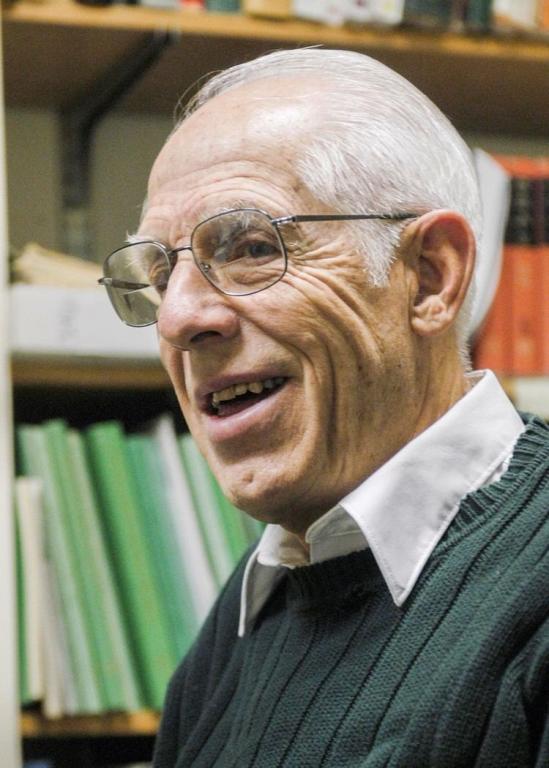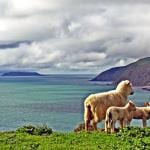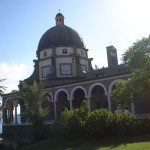
(Wikimedia Commons public domain photograph)
For an unpleasant few days recently, a zealous and pseudonymous advocate of the “Heartland” model for the geography of the Book of Mormon was active in the comments section of this blog. His not particularly convincing approach was to call me stupid and incompetent, to insult many of my best friends, to predict that I will be severely punished in the next life for my failure to share his geographical ideas, and to accuse me of having stolen my own views on the topic from a former mid-level leader of what was once called the Reorganized Church of Jesus Christ of Latter Day Saints. This former RLDS leader was named L. E. Hills, and he apparently died in 1925.
I’m not quite sure that I fully understand the accusation involving L. E. Hills. Apparently I’ll be damned at least in part because my view of Book of Mormon geography comes — he claims — from a member of the Reorganized Church (now known as the Community of Christ). It seems, though I could be wrong, that “TwoCumorahFraud,” as my accuser styled himself in this latest round of nastiness — he’s used other pseudonyms during previous rounds — may believe that agreeing with ideas that were originally conceived (even if only in part) outside of the Church of Jesus Christ 0f Latter-day Saints is a serious offense, and possibly a damnable one.
As my pseudonymous non-admirer likes to point out, of course, I’m pretty dumb. But it seems to me that he’s committing the well-known “genetic fallacy,” in which an argument is dismissed, or information is discarded, based solely on its origin or source and not based on its content. To me, the truth or falsity of an idea is what counts, not whether or not it came from a bad person or a disapproved source. If someone tells me that the formula for the circumference of a circle is 2πr, I’m not going to reject that formula if, later on, he turns out to be an adulterer, a Democrat, or even a Heartlander. Such matters are completely irrelevant. I’ve very rarely had the opportunity to vote for a believing Latter-day Saint in a presidential election.
The other charge is that I actually plagiarized the work of L. E. Hills, and that I will also be punished in the eternities for that offense. To which I respond with a bit of autobiography:
When I was attending church in southern California during my high school years, a weekly publication called The California Intermountain News was often available for free picking-up in our chapel’s foyer. It was expressly oriented toward Latter-day Saints. I assume that The California Intermountain News covered its expenses via advertising, because there was no charge for it. Commonly, and perhaps indeed in every issue, there were ads for tours of “Book of Mormon lands.” These ads always featured photographs of such things as stone serpent figures in Teotihuacan and the step-pyramid temples of Tikal and Chichen Itza. They always invited readers to travel to Guatemala, El Salvador, and Mexico. They never invited us to sign up for “Book of Mormon lands” tours to Illinois, Missouri, or even New York. No, those places were covered by “Church History” tours.
I don’t think that, during those years, I ever read a book by Elder Milton R. Hunter (1902-1975). But he was part of the general believing-Latter-day Saint intellectual background that I imbibed from the ambient air. Elder Hunter, who (I think) is scarcely remembered now, was a member of what was then called the First Council of the Seventy, and, somewhat unusually for that generation of General Authorities, he held a doctorate (in history, from the University of California at Berkeley). He was a rather prolific writer, largely on historical topics, and, most relevantly, was the co-author, with Thomas Stuart Ferguson, of a book entitled Ancient America and the Book of Mormon. First published in 1950, that volume focuses on the writings of the Aztec historian Ixtlilxochitl, which seemed to corroborate a number of elements in the Book of Mormon. Elder Hunter and Brother Ferguson, a lawyer based in northern California, were also the co-founders of the New World Archaeological Foundation, which, then as now, concentrated its efforts on Mesoamerica (and, most especially I think, on the area of Chiapas in the very southernmost part of Mexico). If I’m not mistaken, they met while Brother Ferguson was a law student at Berkeley and Brother Hunter was a graduate student working on his Ph.D.
Thomas Stuart Ferguson became a somewhat controversial figure in the years after his death, but that is a subject for a different time. (I’ve actually already published on the matter. But not for many years now, as interest in him seems to have waned quite a bit.) My point is, simply, that virtually everybody that I knew in the Church who gave any thought to the matter of Book of Mormon geography seems, so far as I could tell, to have presumed a roughly Mesoamerican setting for it. To be more precise, my impression is that most of my acquaintances in the Church assumed a hemispheric setting for the Book of Mormon in the sense that the final Nephite and Jaredite battles were thought to have happened at the Hill Cumorah in New York and that Inca or pre-Inca Peru was somehow vaguely relevant as well, but that most of Nephite and Jaredite history had transpired in Central America.
I recall a large, coffee-table-sized book by somebody or other, filled mostly with sepia-toned photographs of sites in Mexico and Honduras and contiguous areas, as well as fascinating images of Izapa Stela 5 and of the famous Aztec calendar stone, that purported to illustrate the world of the Book of Mormon. I can’t recall the author’s name or the title. I think my family owned the book; I may still have it, somewhere, but, if I do, I haven’t seen it in many years. Reflecting on it now, I see it as uncritically mingling buildings and objects from the Classic and Post-Classic periods (the latter certainly well past the claimed time of the Book of Mormon), and perhaps even some Inca sites in Peru. The 1972 BYU film Ancient America Speaks, which came out during my mission, definitely includes scenes of the famed cyclopean walls near Cusco but, again, its focus is strongly on Central America or Mesoamerica.
I was aware of all of this, though the geography of the Book of Mormon was never, and never has been since, a particular focus of mine. The first book on the subject that I ever read was David A. Palmer’s In Search of Cumorah: New Evidences for the Book of Mormon from Ancient Mexico, which was initially published in 1981. (Brother Palmer died relatively soon thereafter, still fairly young.) I found In Search of Cumorah persuasive. But the real breakthrough for me was John L. Sorenson’s seminal volume An Ancient American Setting for the Book of Mormon, which appeared in 1985. It had been circulating in samizdat form for several years, having apparently been blocked from publication by a General Authority who disapproved of it; in fact, David Palmer’s book had been heavily influenced by Sorenson’s as-yet unpublished general geographical model. I can still recall the excitement with which I read it.
What I’m saying here is that I’ve been inclined to a Mesoamerican setting for the Book of Mormon all of my conscious life. Reading Palmer and then, much more powerfully, reading Sorenson simply provided me with the intellectual grounding for my inclination. Not too long after I joined the faculty at BYU in 1985, my wife and I were also invited to join a monthly book group to which John Sorenson and his wife already belonged. So we became friends, as well as, eventually, colleagues at the old Foundation for Ancient Research and Mormon Studies, or FARMS. John continued to work on his Mesoamericanist approach to the Book of Mormon, publishing several more very important books and articles — including a massively expanded and retitled 2013 version of An Ancient American Setting for the Book of Mormon that he called Mormon’s Codex: An Ancient American Book — until a relatively short time before his death near the end of 2021 at the age of ninety-seven.
In 1992, John Sorenson published an interesting treatment of the history of models for the geography of the Book of Mormon: The Geography of Book of Mormon Events: A Source Book. In it, among many others, he explains and discusses all of the various theories, including L. E. Hills’s model, which has several obvious resemblances to his own as well as not a few significant differences.
I myself, though, have never (to my knowledge) read a line of the writing of L. E. Hills, nor ever so much as laid an eye on any book or article written by him. My introduction to serious thinking about Book of Mormon geography came via David A. Palmer and then, even more importantly and far more broadly, through the work of my late friend John Sorenson.
I have not been convinced, thus far, by Heartlander arguments that the events of the Book of Mormon occurred in, say, the Upper Midwest and New York State. I’m perfectly fine, though, with their holding such views, even if I disagree with them. As far as I’m concerned, the important matter is belief that those events occurred. Where they occurred is of far less moment to me. What I object to, though, is the tendency of some though not all Heartlanders to verbally “excommunicate” those who fail to share their views on the subject. I’ve personally received scores and scores of anonymous emails over the years not only harshly insulting me but accusing me of deliberate conspiratorial deception, of throwing Joseph Smith under the bus, of rejecting modern prophets and apostles, and the like, all because I’m inclined to a different geographical model for the Book of Mormon than the Heartlanders are. And, sadly, the Neville-Neville Land blog has chronicled literally hundreds of such false and uncharitable accusations made publicly, against me and many others. That, I admit, is repulsive to me.











